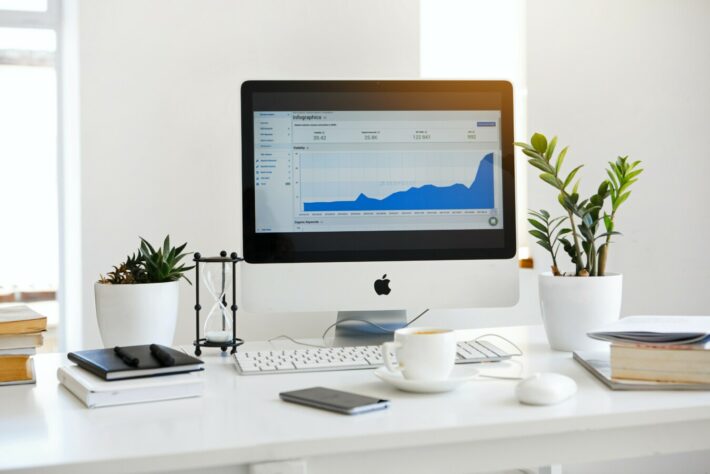Introduction
The COVID-19 pandemic shows how important data and data visualizations are: they are showing data and visualizations in the news, newspapers, on social media,… everywhere you see dashboards are popping up about the number of positive tests, vaccinations, hospitalizations and unfortunately also deaths.
A remarkable thing is that there is a lack of COVID-19 dashboards made especially for businesses. Those insights on how your employees and customers are handling the pandemic can be very useful. And what is mostly remarkable is that the data for the business insights are there, but they are not used properly at the moment.
In this blogpost we will present you some examples of possible data visualization on the COVID-19 topic which can be useful for companies.
Why should my business make COVID-19 related dashboards?
For businesses, there are many reasons to think about making these dashboards. In the last 1,5 years, we are all working from home. Data is from great importance to understand the impact that COVID-19 has on our work and personal lives, but also for our customers. We are shifting to another sort of communication, both with our customers as with the employees in the company. What is the business impact? What is the impact on business operations? How can we reopen again, without too many changes for our people? What is the new normal?
Sciensano is already making a lot of dashboards for the Belgian government, accessible for everyone. Take a look: https://datastudio.google.com/embed/reporting/c14a5cfc-cab7-4812-848c-0369173148ab/page/ZwmOB
Interesting analyses:
- How can we manage lockdowns in the future?
- What is the best way to communicate with our employees and customers?
- Where are my employees travelling?
- Who is in quarantine due to corona illness?
- Who is already vaccinated in our company?
- What is the business impact of corona on profit?
- How are our customers doing?
Dashboard examples
Employee experience and the “new working”
These dashboards can show how our employees are experiencing the COVID-19 pandemic. How is working from home going? Does everyone have the tools they need to keep doing the job from home? How do employees feel about returning? How is the work-live balance now?
By doing surveys, combining with work that has been done, we can monitor the employee’s happiness.
HR
For the HR department it is interesting to monitor the employees. Firstly, how is the occupancy rate? How many people are ill or can’t go to work due to quarantine? Secondly, what can we do to protect the employees? Who is more likely to get the virus? Who is already vaccinated? Also, what is the mental state of our employees?
To show these insights, it is likely to show the data by age and work location (customers). What is also interesting, is to compare the data with public data: where are the most infections in the country?
By this, the HR department can see where to react to ensure the safety of the employees, ensure a high enough occupancy rate and maybe hire extra people to ensure the daily work can be guaranteed.
For example: https://www.tableau.com/about/blog/2020/5/6-dashboards-tableau-partners-help-you-mitigate-covid-19-impacts
Sales
It is likely that customers experienced an impact on their daily business due to COVID-19. As a sales department it is important to monitor, together with the customers, what happened and what we can do as a partner. Also searching for new opportunities, because of COVID-19 is important. It speaks for itself that COVID-19 is not something we wished for, but new companies maybe developed due to the pandemic. By doing market research, the sales department can discover new opportunities. For example as a BI company, we can help companies in making COVID-19 dashboards to exposure insights.
Finance
It speaks for itself that COVID-19 has a financial impact on business. Only by showing the impact, business can make decisions. What is the lost profit because employees couldn’t work? Which of our customers didn’t order as normally which causes a decrease in our revenue?
Comparing financial data with operation data, together with the causes of the decrease of revenue can give business better insight.
For example: https://www.tableau.com/about/blog/2020/5/6-dashboards-tableau-partners-help-you-mitigate-covid-19-impacts
Conclusion
This short blogpost is a trigger for companies to look for insights within the different departments of the company around COVID-19. There are many examples already, so companies shouldn’t stay behind to look for the data and make visualizations to ensure they handle the pandemic correctly inside the company. It will not only benefit the profit, but most importantly it will help companies to have a better insight in how the employees are experiencing the pandemic. What is the impact on their lives? What will be the “new working” model? It will open your eyes as a company, so don’t wait any longer!
